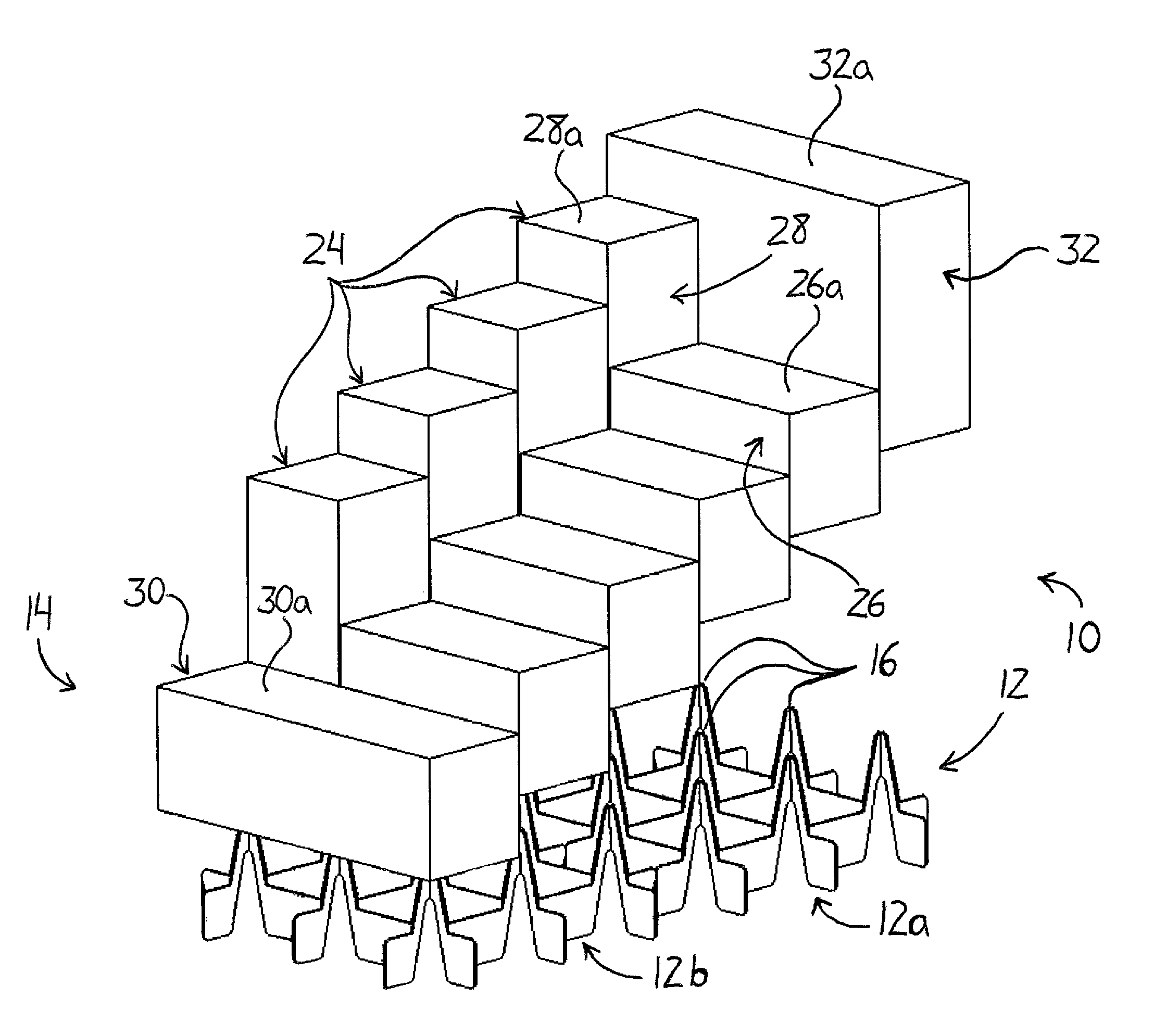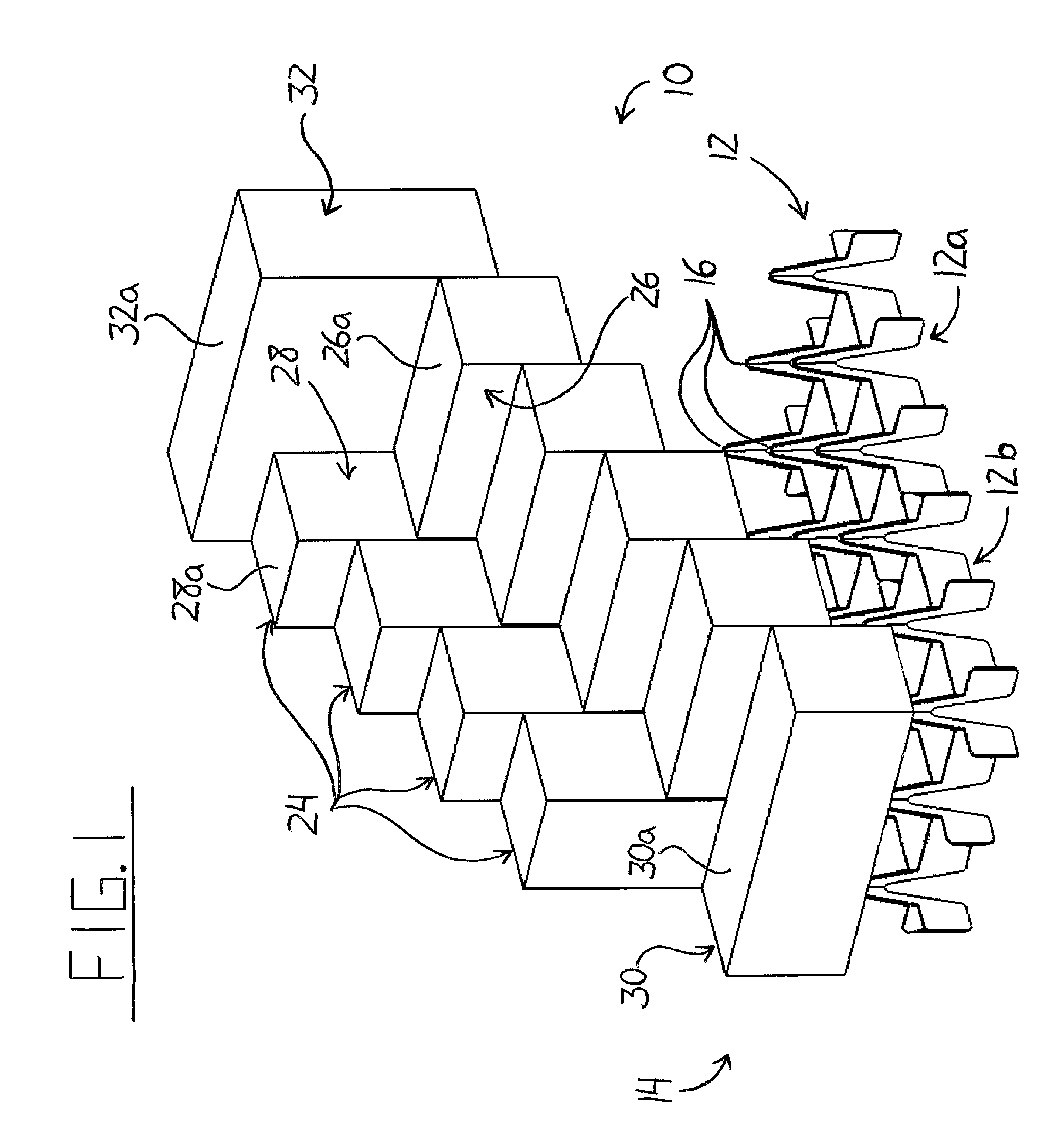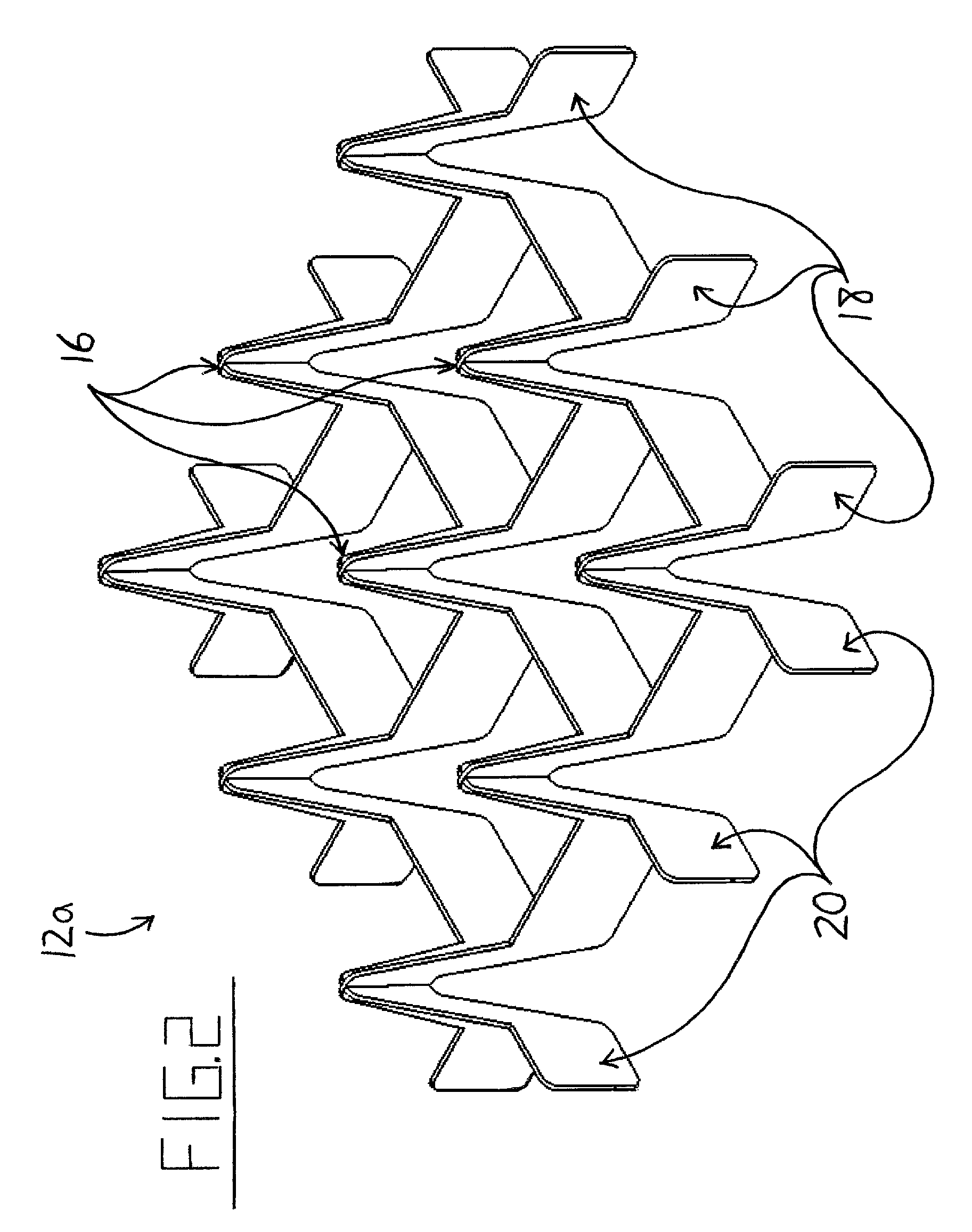Modular furniture system
a furniture system and modular technology, applied in the field of modular furniture systems, can solve the problems of limited appearance and function of conventional furniture, limited to the same general overall shape, and inability to provide, and achieve the effect of facilitating a change in the shape of the piece of furnitur
- Summary
- Abstract
- Description
- Claims
- Application Information
AI Technical Summary
Benefits of technology
Problems solved by technology
Method used
Image
Examples
Embodiment Construction
[0045]FIG. 1 shows a modular furniture system 10 according to the present invention. The system 10 features a grid-like base frame 12 atop which a plurality of support-surface components 14 can be engaged to the frame in a variety of different positions and orientations relative to one another so as give the owner of the system control over the overall shape of the piece of furniture to be formed by the system 10. The base 12 defines a two-dimensional rectangular array of engagement sites, at each of which one of the plurality of surface components 14 engages the frame 12. Each engagement site is defined by a projection 16 formed at the intersection of frame members defining the grid like base frame 12. A linear array of slots extend into each of the plurality of surface components 14 from a bottom surface thereof to receive respective ones of the upward extending projections 16 within the rectangular array of engagement sites provided by the base 12. The slots and projections are s...
PUM
 Login to View More
Login to View More Abstract
Description
Claims
Application Information
 Login to View More
Login to View More - R&D
- Intellectual Property
- Life Sciences
- Materials
- Tech Scout
- Unparalleled Data Quality
- Higher Quality Content
- 60% Fewer Hallucinations
Browse by: Latest US Patents, China's latest patents, Technical Efficacy Thesaurus, Application Domain, Technology Topic, Popular Technical Reports.
© 2025 PatSnap. All rights reserved.Legal|Privacy policy|Modern Slavery Act Transparency Statement|Sitemap|About US| Contact US: help@patsnap.com



